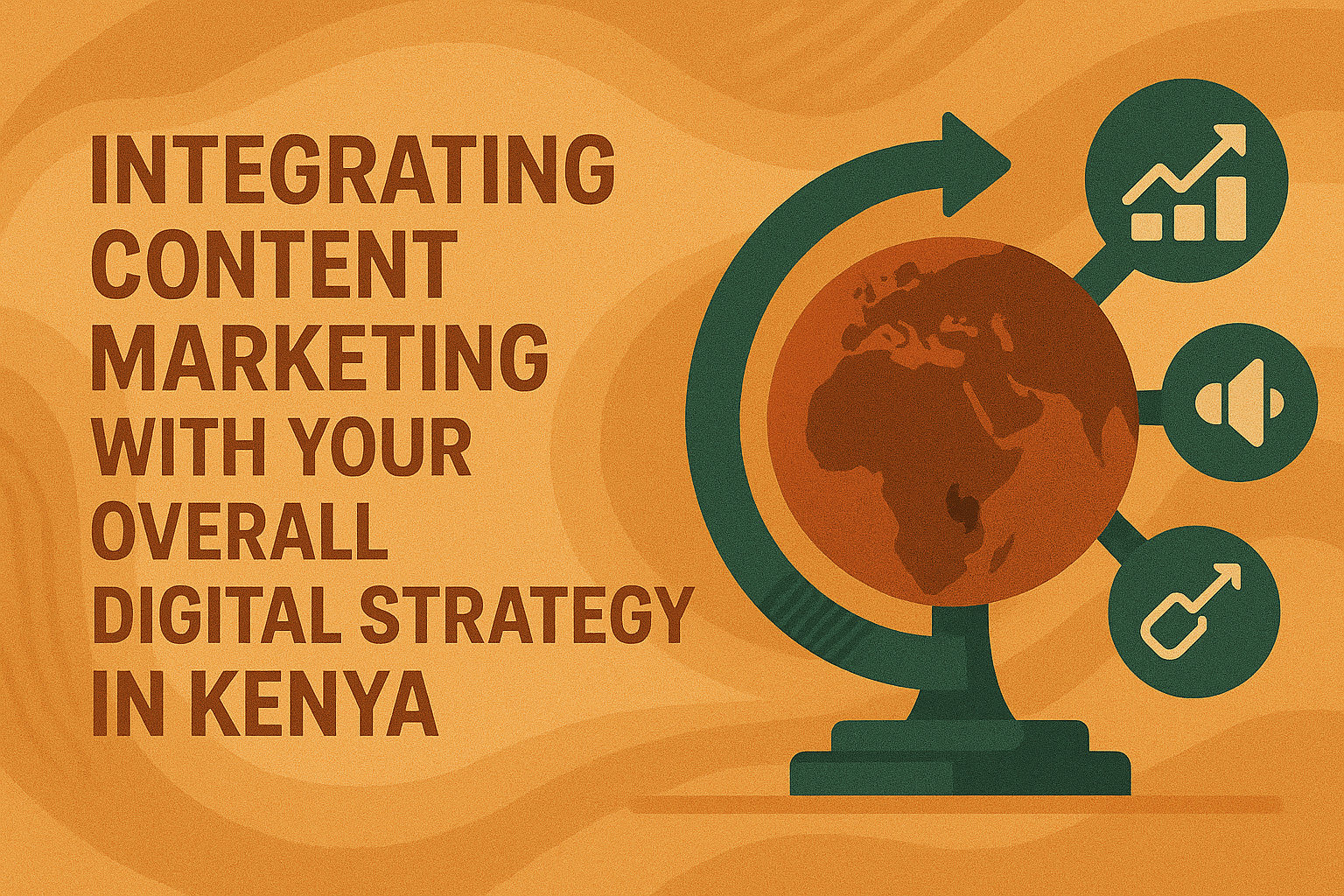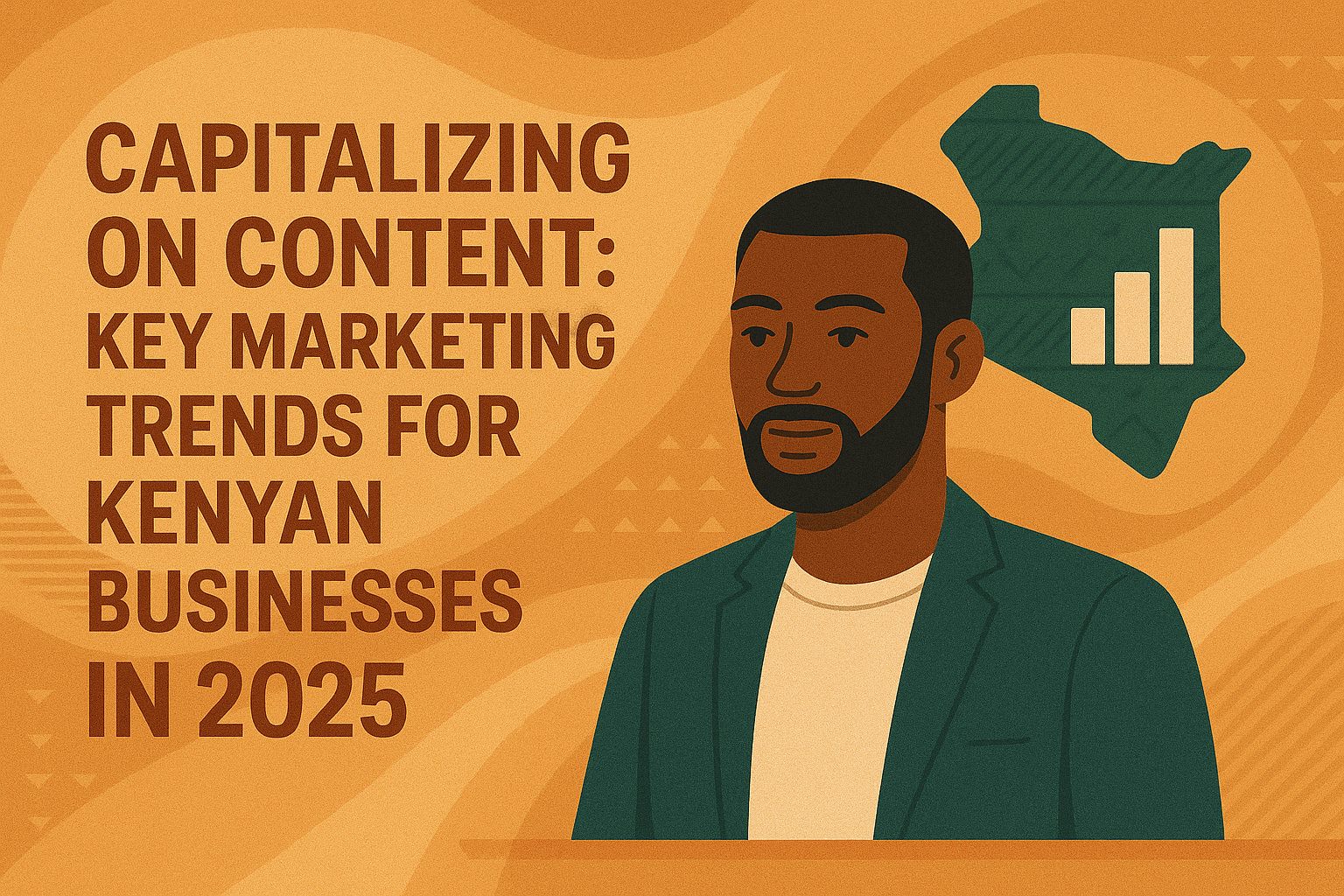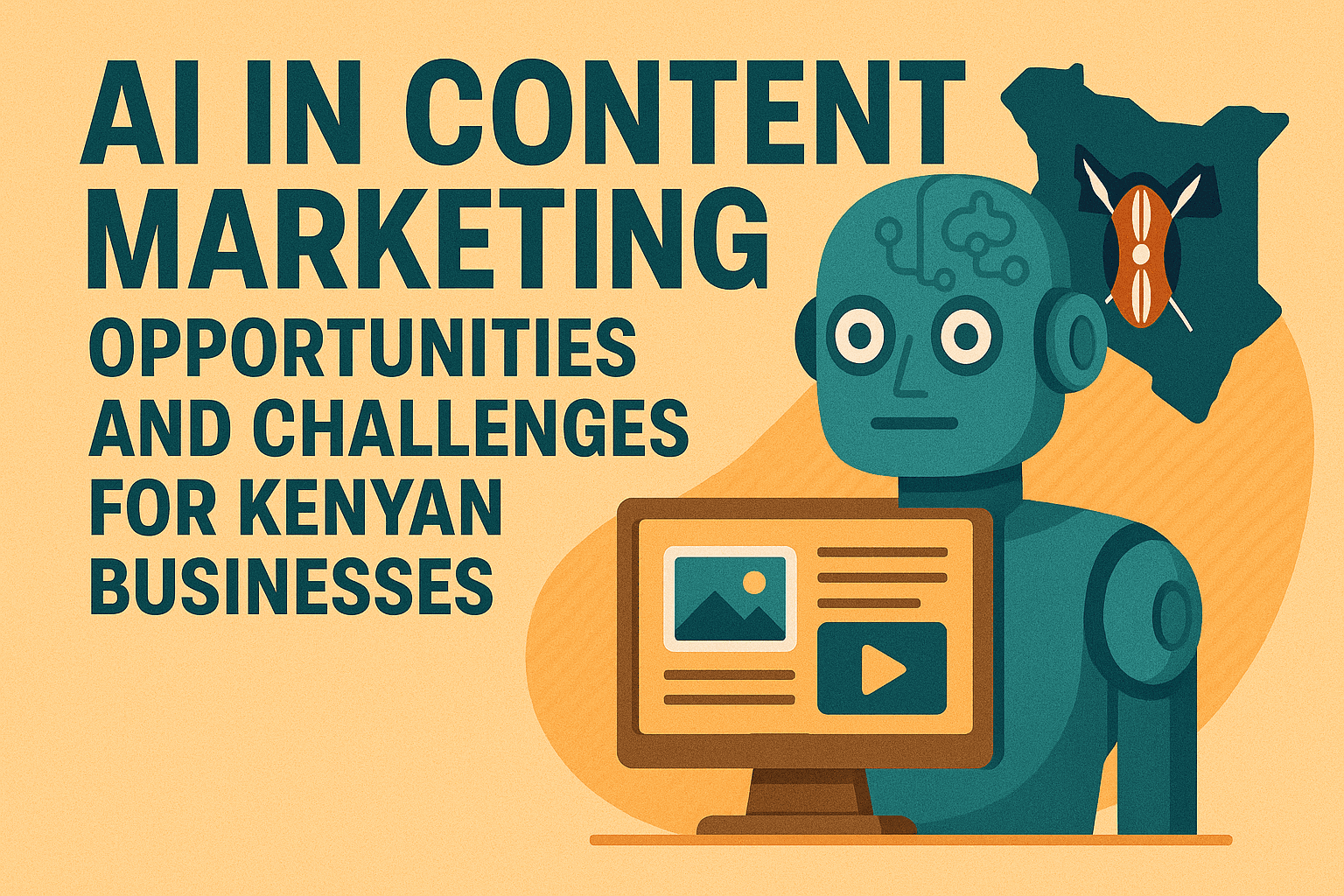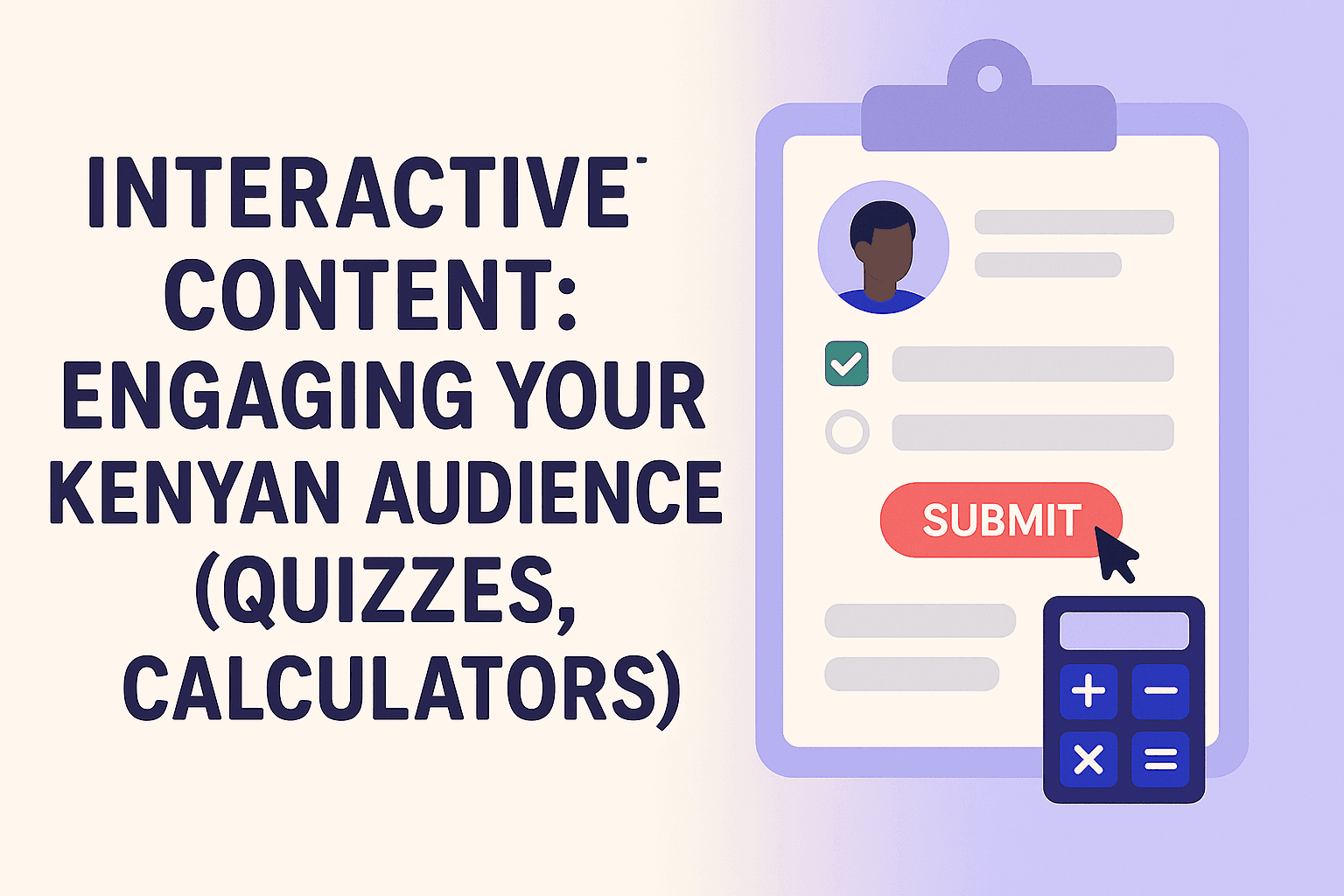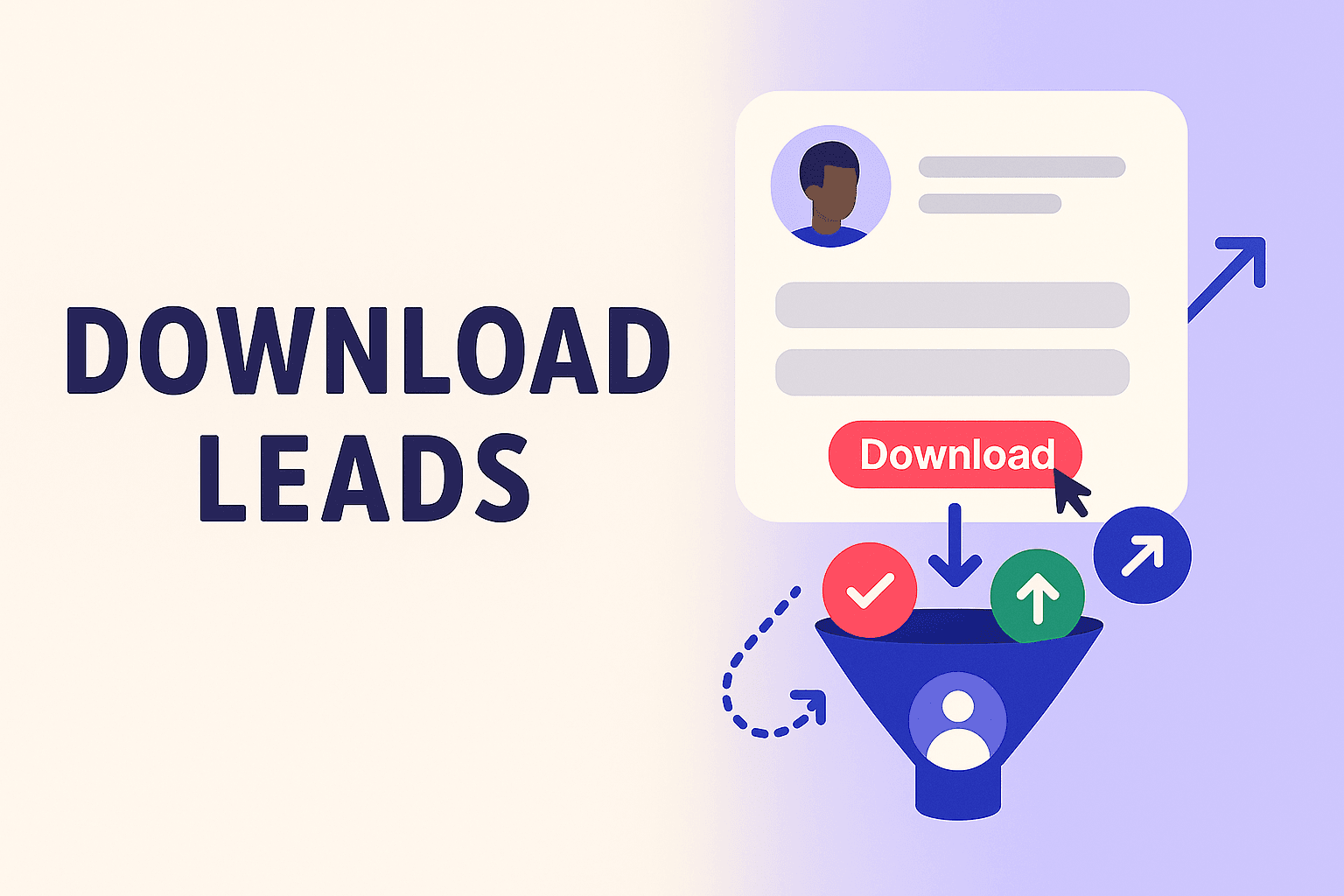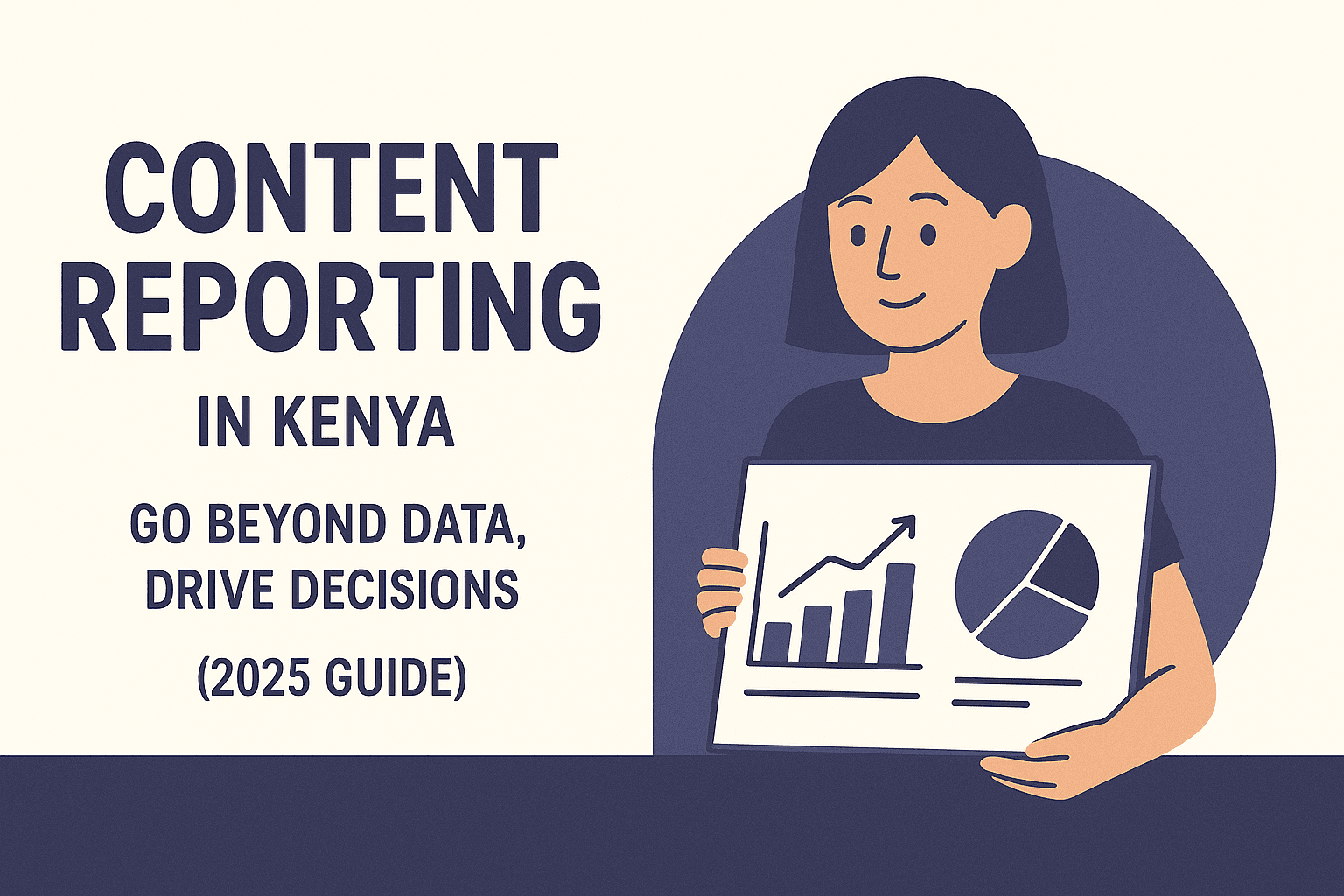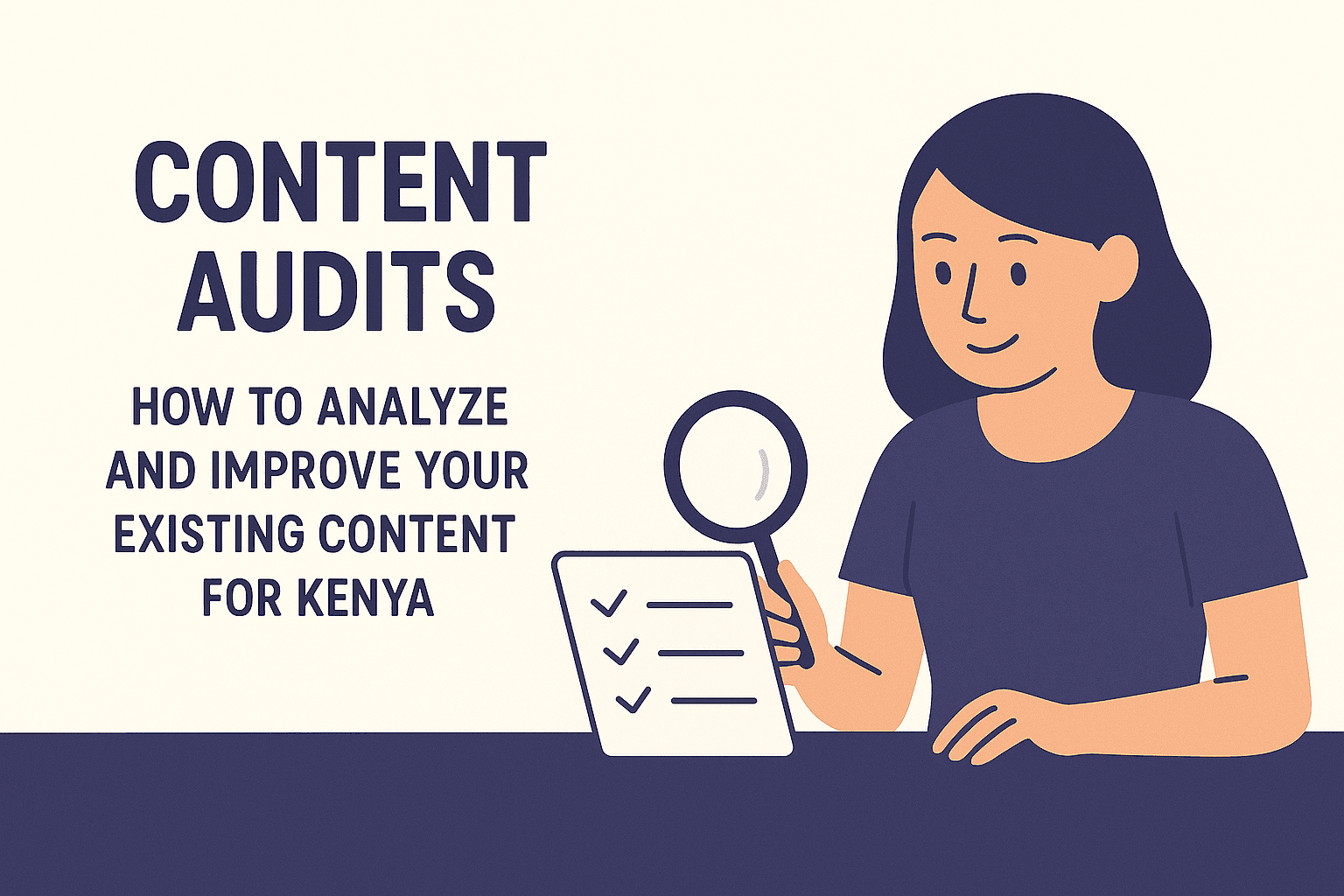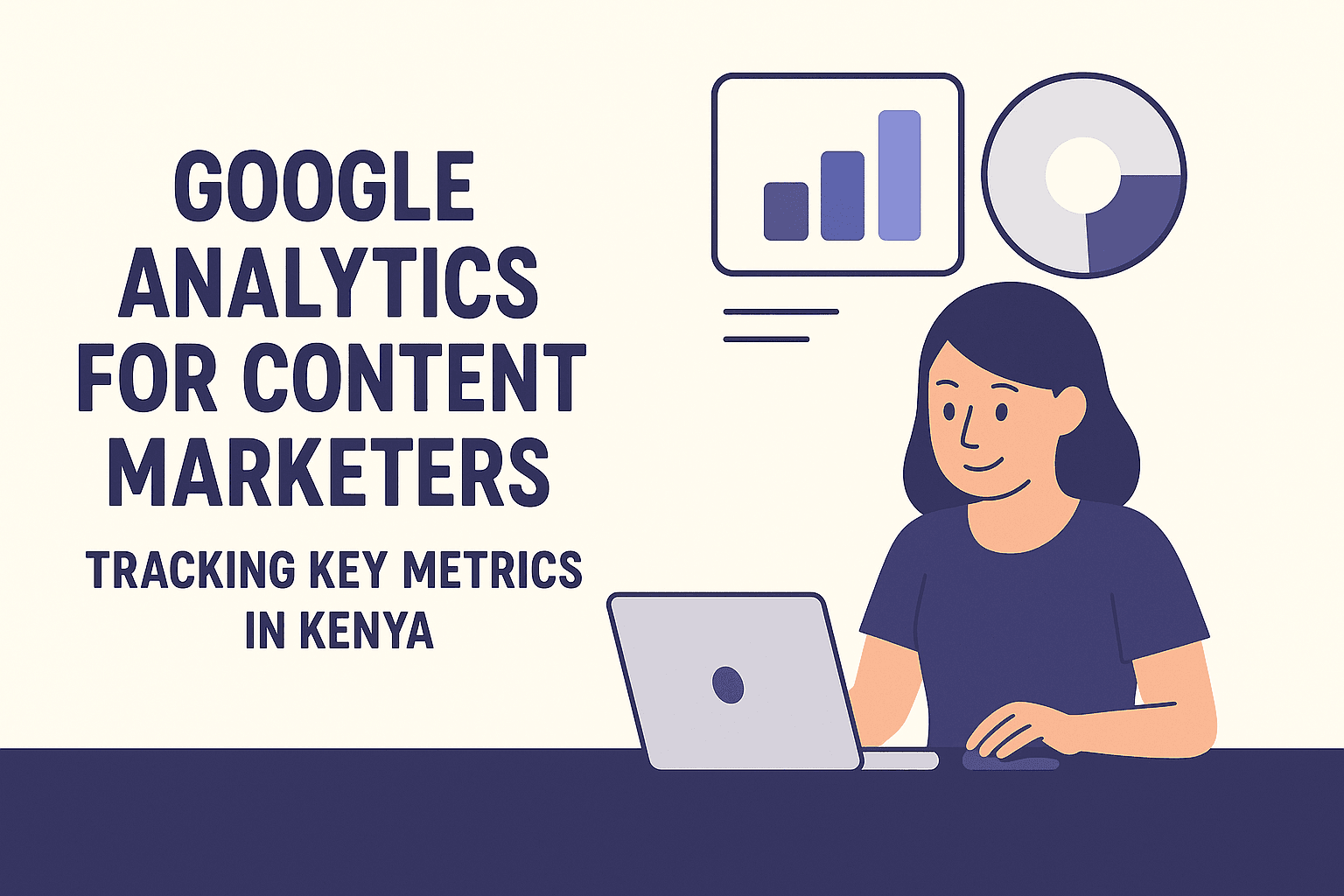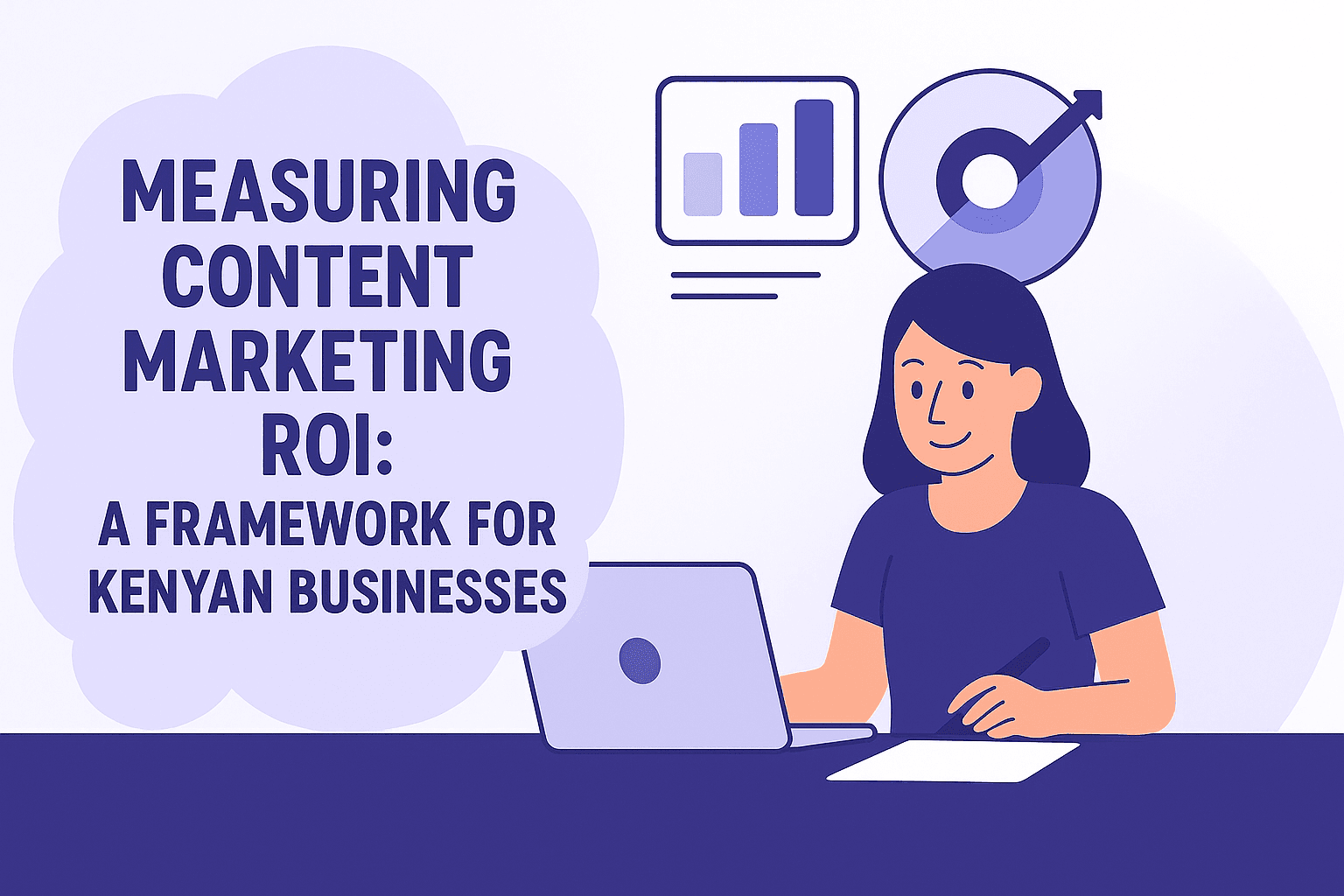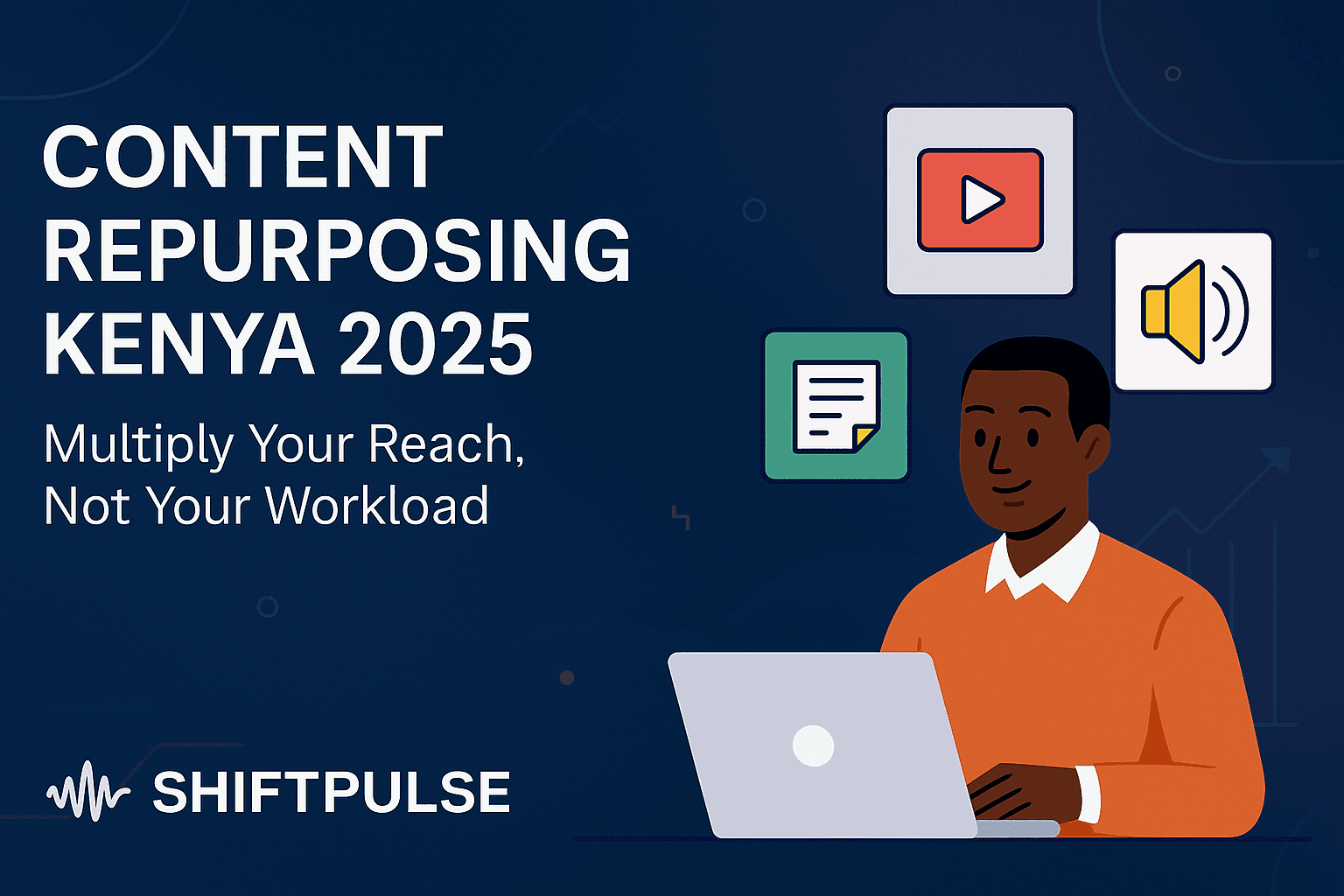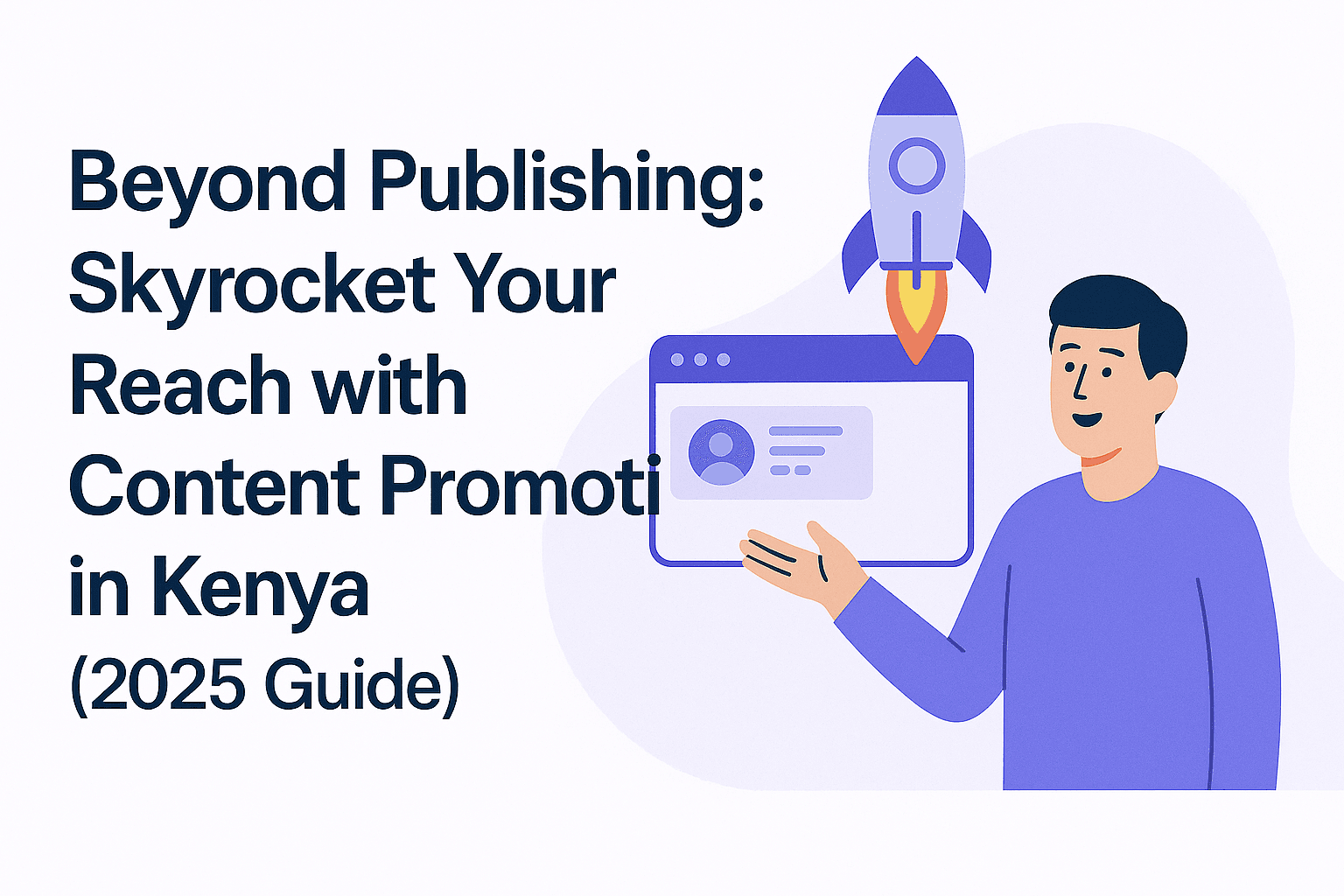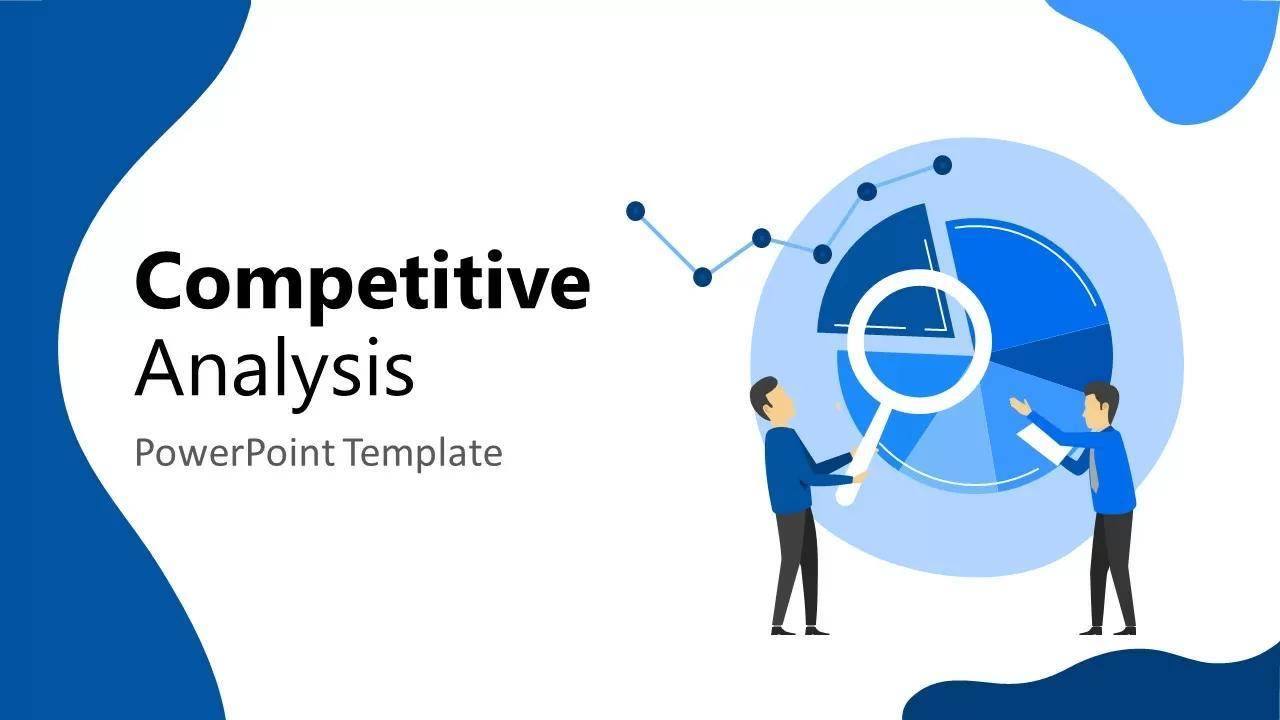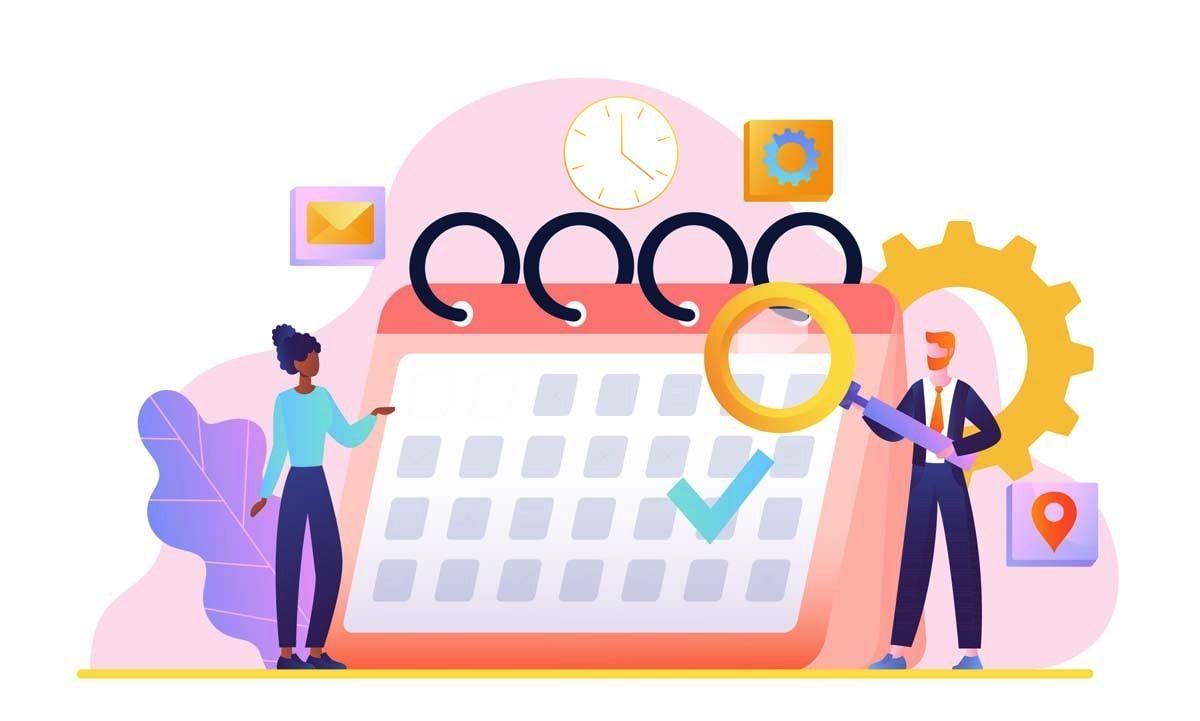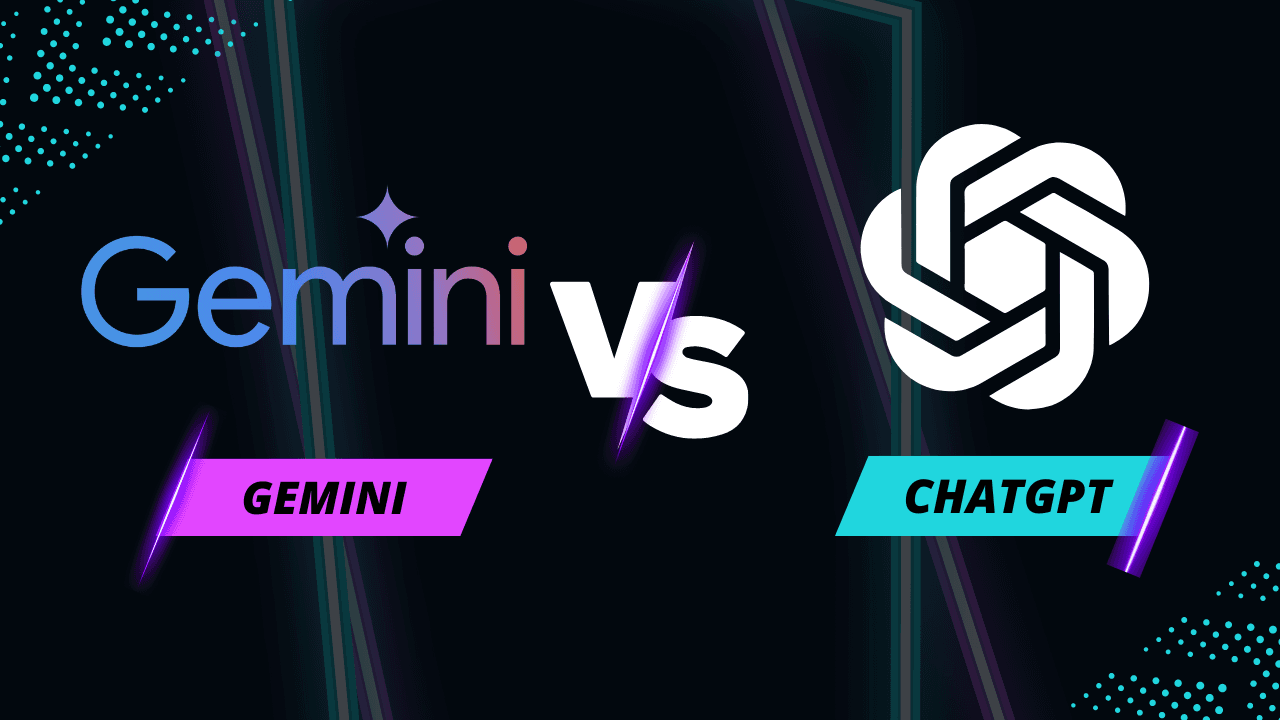
Ken Kariuki
Shiftpulse Marketers
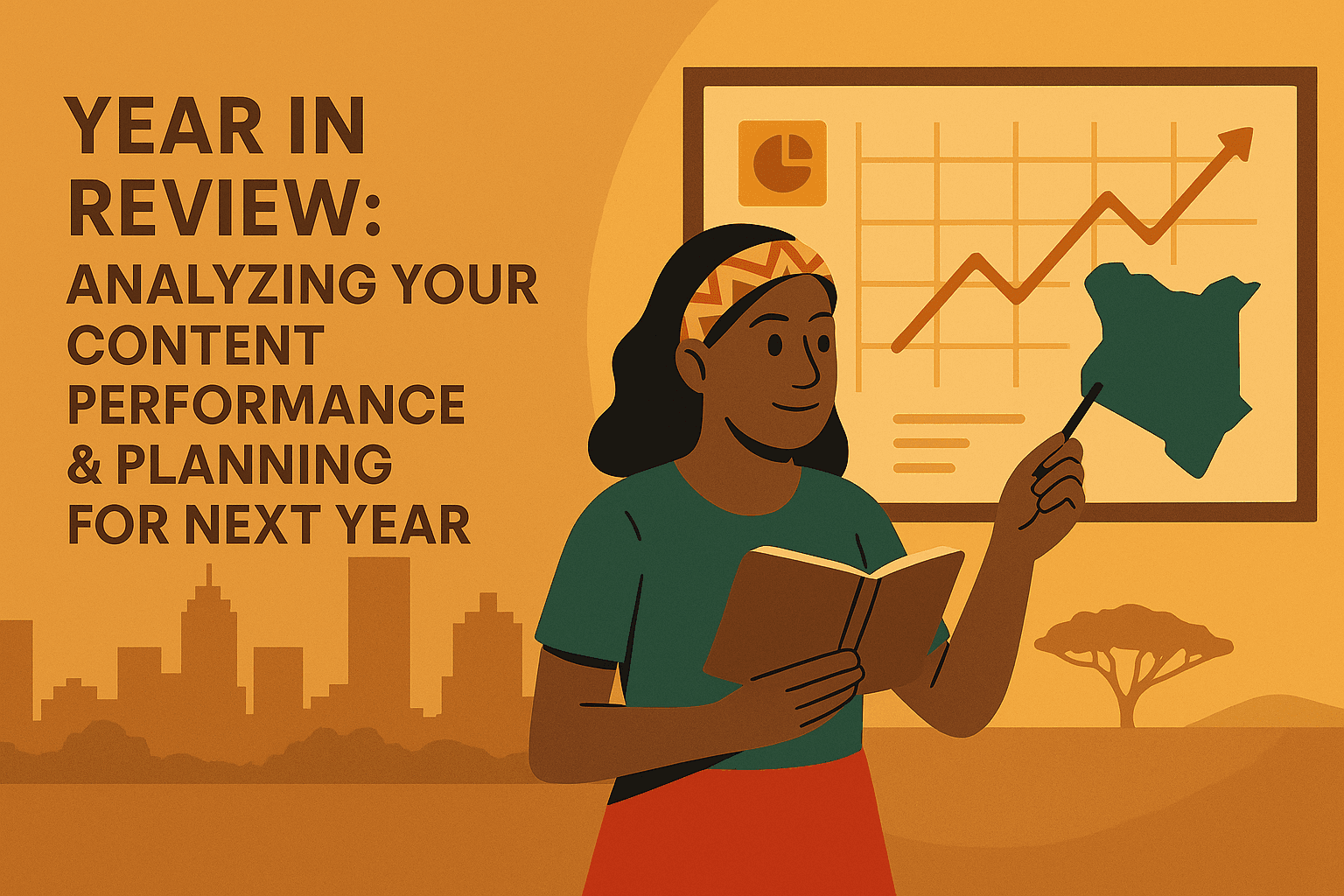
TL;DR: A strategic content audit ensures your marketing remains relevant, effective, and compliant in Kenya’s evolving digital space. Define SMART goals, track key performance metrics, analyze SEO and engagement data, update outdated content, and ensure DPA compliance for trust and legal safety. ShiftPulse Digital guides businesses through this process to maximize ROI
Is Your Kenyan Content Strategy Still Delivering? Time for a Check-Up!
Your business is constantly evolving, and so is Kenya's dynamic digital landscape. The content you created last quarter, or even last year, might not be hitting the mark anymore. Are you sure your blogs, videos, and social posts are still relevant, performing well, and aligned with your current business goals?
If you're feeling adrift or unsure about your content's impact, it's time for a strategic content audit and planning session. This isn't just a year-end task; it's a vital periodic health check to ensure your content marketing efforts remain effective, compliant, and deliver a strong ROI in the Kenyan market.
At ShiftPulse, our integrated team uses audits to drive data-informed strategies. This guide provides a practical, step-by-step framework – combining insights from strategists, content managers, SEO specialists, analysts, and compliance experts – to help your Kenyan business audit its content effectively and plan for future success.
Let's diagnose your content health and prescribe a plan for growth.
Step 1: Define Success – Set SMART Goals & KPIs (The Strategist & Analyst View)
Before you dive into data, clarify what "good" looks like.
- Align with Business Objectives: What are your company's main goals right now? (e.g., Increase market share in Nairobi, boost online sales, improve customer retention).
- Set SMART Content Goals: Make them Specific, Measurable, Achievable, Relevant, and Time-bound.
- Example: "Increase organic traffic to our 'Kenyan SME Resources' blog section by 25% within the next 6 months." OR "Generate 50 qualified leads per quarter via our downloadable 'Kenya Tax Guide'."
- Define Key KPIs: Choose measurable indicators:
- Website Traffic & Engagement (Sessions, Engagement Rate, Time on Page - especially on mobile!)
- Lead Generation (Downloads, Form Fills, MQLs)
- Social Media Metrics (Engagement Rate, Follower Growth)
- SEO Performance (Keyword Rankings for local/Swahili terms, Google Business Profile impressions/actions)
- Email Metrics (Open/Click Rates)
ShiftPulse Analyst Insight: Clear, measurable goals and KPIs focused on business outcomes are essential. Don't just track vanity metrics; track what impacts the bottom line.
Step 2: Know Your Assets – Conduct a Content Inventory (The Content Manager View)
You can't manage what you don't know you have. Create a master list of your content.
- How: Use a simple spreadsheet (Google Sheets/Excel) or tools like Screaming Frog (free for up to 500 URLs) to catalogue assets.
- What to Log: For each piece (blog, webpage, video, social post, PDF):
- URL
- Title
- Content Type/Format
- Publication/Update Date
- Original Goal
- Target Keyword(s)
- Target Audience/Persona
- Note any specific Kenyan localization (language like Swahili, regional focus).
ShiftPulse Content Management Tip: An organized inventory is the foundation for efficient analysis and identifying outdated content.
Step 3: Gather Performance Data (Kenya-Specific) (The Analyst View)
Pull the numbers to see how your content performed.
- Key Tools:
- Google Analytics 4 (GA4): For website traffic, engagement, conversions. Crucially, segment data by 'Kenya' and compare 'Mobile' vs. 'Desktop' performance. [Link to: /resources/ga4-guide-kenyan-content-marketers-2025]
- Google Search Console (GSC): For organic search data – which Kenyan queries drive traffic, rankings, mobile usability issues.
- Social Media Analytics: Native insights from Facebook, Instagram, TikTok, LinkedIn, X.
- CRM/Email Platforms: Lead data, conversion tracking, email open/click rates.
- Compile Data: Gather metrics for each content piece against the KPIs set in Step 1. Put it in your inventory spreadsheet or a simple dashboard (Google Looker Studio is free).
ShiftPulse Analyst Insight: Focus on data specifically from your Kenyan audience and how they behave on mobile – that's where the majority action is.
Step 4: Analyze Performance & ROI (Identify Winners & Losers) (The Analyst & Strategist View)
Transform raw data into actionable insights.
- Identify Top Performers:
- High Traffic: Which pages get the most views? Why? (SEO, social share, topic?)
- High Engagement: Which content keeps users reading/watching longest? (Check GA4 Engagement Rate/Time). Which social posts spark conversation?
- High Conversion: Which pieces directly generate leads or sales? (Track via GA4 goals/CRM).
- Pinpoint Underperformers:
- Low Engagement: High bounce rates or low time-on-page? (Content might be irrelevant, low quality, or poorly optimized for mobile).
- SEO Gaps: Content targeting keywords but not ranking/getting traffic?
- Outdated/Broken: Content with old info, broken links.
- Calculate ROI (Where Possible): Compare the estimated value generated (leads * average value, attributed sales) against the cost of creating and promoting the content. Even a simple cost ratio helps prioritize. [Link to: /marketing-roi-toolkit]
- Apply Pareto Principle (80/20 Rule): Often, ~20% of your content drives ~80% of results. Identify this high-performing content – it's your template for future success.
ShiftPulse Strategy Insight: Focus analysis on understanding why content performs well or poorly in the Kenyan context. Use top performers as models.
Step 5: Quality, Relevance & Compliance Check (The Content Manager & Legal View)
Go beyond metrics to assess content quality and adherence to standards.
- Content Quality:
- Accuracy: Is information factually correct and up-to-date for Kenya (stats, regulations)?
- Relevance: Does it still address current Kenyan audience needs and interests?
- Brand Consistency: Does it align with your current brand voice, style, and visuals?
- Mobile Readability: Is it easy to read and navigate on a smartphone?
- Compliance Corner (Legal View):
- Data Protection Act (DPA) 2019: CRITICAL! Are lead capture forms/email sign-ups DPA-compliant (explicit opt-in consent)? Are you providing easy opt-outs? Is your Privacy Policy up-to-date and Kenyan-specific? [Link to DPA/Compliance resource if available]
- Advertising Standards (ASBK Code): Is content truthful, decent, and not misleading? Are claims substantiated?
- Consumer Protection Act: Avoid deceptive practices.
- Sector-Specific Rules: (e.g., Advocates' Marketing Rules for law firms – no guarantees, factual, dignified). Ensure compliance if applicable.
- Copyright: Are all images/assets properly licensed?
ShiftPulse Compliance Insight: Regular compliance checks are essential. Non-compliance with DPA or advertising standards damages trust and carries legal risks in Kenya.
Step 6: Synthesize Insights & Spot Content Gaps (The Strategist View)
Bring your quantitative and qualitative findings together.
- Summarize: Create a simple SWOT (Strengths, Weaknesses, Opportunities, Threats) based on your analysis.
- Identify Gaps: Where are the holes in your content?
- Topics: What questions are your Kenyan customers asking that you haven't answered? What are competitors covering well?
- Formats: Are you overly reliant on text? Do you need more video (highly popular in KE!), infographics, or interactive content?
- Funnel Stages: Do you have enough content for Awareness, Consideration, and Decision stages?
- Platforms: Are you neglecting channels where your audience is active (e.g., TikTok, LinkedIn)?
- Language/Localization: Do you need more content in Swahili or tailored for specific regions?
ShiftPulse Strategy Insight: Gap analysis turns your audit findings into a clear direction for future content creation.
Step 7: Build Your 2025/26 Content Strategy & Plan (The Strategist & Content Manager View)
Use your audit insights to create a data-driven plan:
Set Refined SMART Objectives: Based on the audit, set realistic goals for the next period.
Choose Content Themes: Focus on topics that performed well and fill identified gaps. Address current Kenyan trends.
Plan Formats & Channels: Prioritize mobile-first formats (short video, mobile-friendly blogs). Select channels based on audience data.
Create an Editorial Calendar: Map out content publication dates, including key Kenyan holidays/events. Ensure consistency.
Allocate Resources: Assign team responsibilities. Select tools (leverage free options!). Set a realistic budget based on planned activities and cost estimates (from Section 2 of the source article).
Integrate Local SEO: Plan content around relevant local and Swahili keywords. Optimize GBP.
Consider Partnerships: Identify potential Kenyan influencers or collaborators.
Plan for Innovation: Allocate some resources to experiment with AI content assistance, interactive tools, or new platforms.
ShiftPulse Planning Tip: A documented content calendar shared between teams ensures alignment and consistent execution.
Step 8: Refine KPIs & Measurement Plan (The Analyst View)
Based on your new strategy, update your KPIs.
- Set New Targets: Adjust benchmarks based on past performance and new goals.
- Document Tracking: Clearly define how you'll measure ROI (UTM strategy, CRM integration plan, conversion tracking setup in GA4).
- Schedule Reviews: Plan for regular (e.g., quarterly) performance reviews and mini-audits. Set up dashboards (e.g., Google Looker Studio) for ongoing monitoring.
ShiftPulse Analyst Insight: Measurement isn't an afterthought. Plan how you will track success before you implement the strategy.
Step 9: Implement, Optimize, Repeat (The Strategist View)
Execute your plan, but stay flexible.
- Execute: Create and distribute content according to your calendar and budget.
- Monitor: Track performance against KPIs regularly.
- Review & Optimize: Hold periodic meetings to discuss results. What's working? What isn't? Adjust tactics, messaging, or budget allocation based on data. Encourage feedback from sales and customer service teams.
ShiftPulse Agile Tip: Kenya's market moves fast. Continuous monitoring and optimization are key to staying relevant and effective.
Conclusion: Your Roadmap to Content Success in Kenya
Conducting a periodic, strategic content audit is essential for any Kenyan business serious about digital marketing success. It provides the clarity needed to refine your strategy, optimize resource allocation, ensure compliance, and ultimately, prove the value of your content investment.
By following this framework – setting goals, inventorying assets, analyzing performance through a Kenyan lens, assessing quality and compliance, identifying gaps, planning strategically, and committing to continuous measurement and optimization – you transform your content from a collection of disparate pieces into a cohesive, powerful engine for growth.
- Ready to conduct a comprehensive content audit and build a data-driven strategy tailored for the Kenyan market? ShiftPulse offers expert content audits, strategic planning, and ongoing optimization services.quarter via our downloadable 'Kenya Tax Guide'."
- Define Key KPIs: Choose measurable indicators:
- Website Traffic & Engagement (Sessions, Engagement Rate, Time on Page - especially on mobile!)
- Lead Generation (Downloads, Form Fills, MQLs)
- Social Media Metrics (Engagement Rate, Follower Growth)
- SEO Performance (Keyword Rankings for local/Swahili terms, Google Business Profile impressions/actions)
- Email Metrics (Open/Click Rates)
ShiftPulse Analyst Insight: Clear, measurable goals and KPIs focused on business outcomes are essential. Don't just track vanity metrics; track what impacts the bottom line.
Step 2: Know Your Assets – Conduct a Content Inventory (The Content Manager View)
You can't manage what you don't know you have. Create a master list of your content.
- How: Use a simple spreadsheet (Google Sheets/Excel) or tools like Screaming Frog (free for up to 500 URLs) to catalogue assets.
- What to Log: For each piece (blog, webpage, video, social post, PDF):
- URL
- Title
- Content Type/Format
- Publication/Update Date
- Original Goal
- Target Keyword(s)
- Target Audience/Persona
- Note any specific Kenyan localization (language like Swahili, regional focus).
ShiftPulse Content Management Tip: An organized inventory is the foundation for efficient analysis and identifying outdated content.
Step 3: Gather Performance Data (Kenya-Specific) (The Analyst View)
Pull the numbers to see how your content performed.
- Key Tools:
- Google Analytics 4 (GA4): For website traffic, engagement, conversions. Crucially, segment data by 'Kenya' and compare 'Mobile' vs. 'Desktop' performance. [Link to: /resources/ga4-guide-kenyan-content-marketers-2025]
- Google Search Console (GSC): For organic search data – which Kenyan queries drive traffic, rankings, mobile usability issues.
- Social Media Analytics: Native insights from Facebook, Instagram, TikTok, LinkedIn, X.
- CRM/Email Platforms: Lead data, conversion tracking, email open/click rates.
- Compile Data: Gather metrics for each content piece against the KPIs set in Step 1. Put it in your inventory spreadsheet or a simple dashboard (Google Looker Studio is free).
ShiftPulse Analyst Insight: Focus on data specifically from your Kenyan audience and how they behave on mobile – that's where the majority action is.
Step 4: Analyze Performance & ROI (Identify Winners & Losers) (The Analyst & Strategist View)
Transform raw data into actionable insights.
- Identify Top Performers:
- High Traffic: Which pages get the most views? Why? (SEO, social share, topic?)
- High Engagement: Which content keeps users reading/watching longest? (Check GA4 Engagement Rate/Time). Which social posts spark conversation?
- High Conversion: Which pieces directly generate leads or sales? (Track via GA4 goals/CRM).
- Pinpoint Underperformers:
- Low Engagement: High bounce rates or low time-on-page? (Content might be irrelevant, low quality, or poorly optimized for mobile).
- SEO Gaps: Content targeting keywords but not ranking/getting traffic?
- Outdated/Broken: Content with old info, broken links.
- Calculate ROI (Where Possible): Compare the estimated value generated (leads * average value, attributed sales) against the cost of creating and promoting the content. Even a simple cost ratio helps prioritize. [Link to: /marketing-roi-toolkit]
- Apply Pareto Principle (80/20 Rule): Often, ~20% of your content drives ~80% of results. Identify this high-performing content – it's your template for future success.
ShiftPulse Strategy Insight: Focus analysis on understanding why content performs well or poorly in the Kenyan context. Use top performers as models.
Step 5: Quality, Relevance & Compliance Check (The Content Manager & Legal View)
Go beyond metrics to assess content quality and adherence to standards.
- Content Quality:
- Accuracy: Is information factually correct and up-to-date for Kenya (stats, regulations)?
- Relevance: Does it still address current Kenyan audience needs and interests?
- Brand Consistency: Does it align with your current brand voice, style, and visuals?
- Mobile Readability: Is it easy to read and navigate on a smartphone?
- Compliance Corner (Legal View):
- Data Protection Act (DPA) 2019: CRITICAL! Are lead capture forms/email sign-ups DPA-compliant (explicit opt-in consent)? Are you providing easy opt-outs? Is your Privacy Policy up-to-date and Kenyan-specific? [Link to DPA/Compliance resource if available]
- Advertising Standards (ASBK Code): Is content truthful, decent, and not misleading? Are claims substantiated?
- Consumer Protection Act: Avoid deceptive practices.
- Sector-Specific Rules: (e.g., Advocates' Marketing Rules for law firms – no guarantees, factual, dignified). Ensure compliance if applicable.
- Copyright: Are all images/assets properly licensed?
ShiftPulse Compliance Insight: Regular compliance checks are essential. Non-compliance with DPA or advertising standards damages trust and carries legal risks in Kenya.
Step 6: Synthesize Insights & Spot Content Gaps (The Strategist View)
Bring your quantitative and qualitative findings together.
- Summarize: Create a simple SWOT (Strengths, Weaknesses, Opportunities, Threats) based on your analysis.
- Identify Gaps: Where are the holes in your content?
- Topics: What questions are your Kenyan customers asking that you haven't answered? What are competitors covering well?
- Formats: Are you overly reliant on text? Do you need more video (highly popular in KE!), infographics, or interactive content?
- Funnel Stages: Do you have enough content for Awareness, Consideration, and Decision stages?
- Platforms: Are you neglecting channels where your audience is active (e.g., TikTok, LinkedIn)?
- Language/Localization: Do you need more content in Swahili or tailored for specific regions?
ShiftPulse Strategy Insight: Gap analysis turns your audit findings into a clear direction for future content creation.
Step 7: Build Your 2025/26 Content Strategy & Plan (The Strategist & Content Manager View)
Use your audit insights to create a data-driven plan:
Set Refined SMART Objectives: Based on the audit, set realistic goals for the next period.
Choose Content Themes: Focus on topics that performed well and fill identified gaps. Address current Kenyan trends.
Plan Formats & Channels: Prioritize mobile-first formats (short video, mobile-friendly blogs). Select channels based on audience data.
Create an Editorial Calendar: Map out content publication dates, including key Kenyan holidays/events. Ensure consistency.
Allocate Resources: Assign team responsibilities. Select tools (leverage free options!). Set a realistic budget based on planned activities and cost estimates (from Section 2 of the source article).
Integrate Local SEO: Plan content around relevant local and Swahili keywords. Optimize GBP.
Consider Partnerships: Identify potential Kenyan influencers or collaborators.
Plan for Innovation: Allocate some resources to experiment with AI content assistance, interactive tools, or new platforms.
ShiftPulse Planning Tip: A documented content calendar shared between teams ensures alignment and consistent execution.
Step 8: Refine KPIs & Measurement Plan (The Analyst View)
Based on your new strategy, update your KPIs.
- Set New Targets: Adjust benchmarks based on past performance and new goals.
- Document Tracking: Clearly define how you'll measure ROI (UTM strategy, CRM integration plan, conversion tracking setup in GA4).
- Schedule Reviews: Plan for regular (e.g., quarterly) performance reviews and mini-audits. Set up dashboards (e.g., Google Looker Studio) for ongoing monitoring.
ShiftPulse Analyst Insight: Measurement isn't an afterthought. Plan how you will track success before you implement the strategy.
Step 9: Implement, Optimize, Repeat (The Strategist View)
Execute your plan, but stay flexible.
- Execute: Create and distribute content according to your calendar and budget.
- Monitor: Track performance against KPIs regularly.
- Review & Optimize: Hold periodic meetings to discuss results. What's working? What isn't? Adjust tactics, messaging, or budget allocation based on data. Encourage feedback from sales and customer service teams.
ShiftPulse Agile Tip: Kenya's market moves fast. Continuous monitoring and optimization are key to staying relevant and effective.
Conclusion: Your Roadmap to Content Success in Kenya
Conducting a periodic, strategic content audit is essential for any Kenyan business serious about digital marketing success. It provides the clarity needed to refine your strategy, optimize resource allocation, ensure compliance, and ultimately, prove the value of your content investment.
By following this framework – setting goals, inventorying assets, analyzing performance through a Kenyan lens, assessing quality and compliance, identifying gaps, planning strategically, and committing to continuous measurement and optimization – you transform your content from a collection of disparate pieces into a cohesive, powerful engine for growth.
Ready to conduct a comprehensive content audit and build a data-driven strategy tailored for the Kenyan market? ShiftPulse offers expert content audits, strategic planning, and ongoing optimization services.
